A short while ago I did a post on the Mourning Cloak butterfly. One of the odd things about this butterfly is that it looks like it only has four feet, but it actually has six feet like most insects. It’s just that the front two are tiny, little things that the butterfly holds near its body. Someone thought the fuzzy, front feet looked like brushes, so that’s how an entire family of butterfly species became known as the Brushfoot family. Today I’m going to look at two other species that are members of this same family: the Eastern Comma and the Question Mark. Yes, they are both named after punctuation. We’ll soon see why.
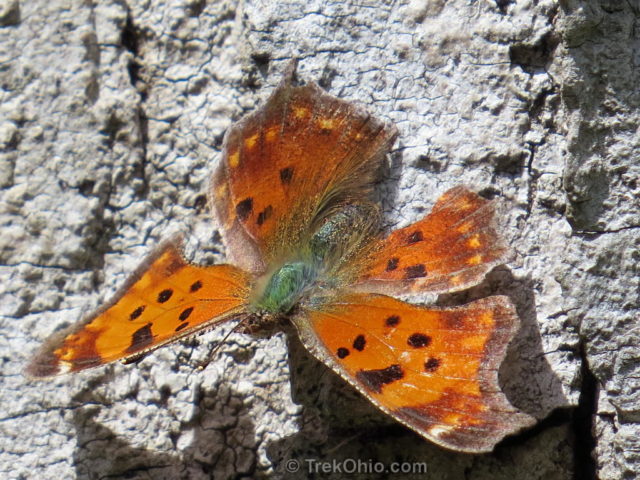
Both species are a beautiful orange with dark markings. The outside edge of their wings also have a lovely curvature. Varying in size from 2.5 to 3.0 inches, the Question Mark is slightly larger than the Eastern Comma (2.0 to 2.5 inches). However I find it easier to distinguish between the two by looking at their markings.
When viewed from the top, the Eastern Comma Butterfly has three dark spots in a row on each of its front wings.
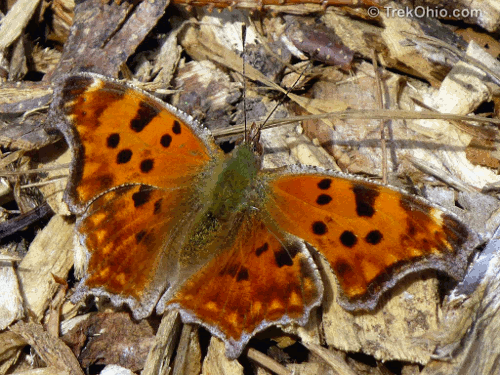
Below is a photo of a Question Mark Butterfly that Dendroica cerulea published under a Creative Commons License. Although it looks lighter than the Eastern Comma above, that’s mostly a question of lighting. The real difference is in the number of spots on the front wing. The Question Mark butterfly has four spots in a row. As a mnemonic to remember which has the most dots, I tell myself that the Question Mark butterfly needs an extra dot because a question mark has a dot on its bottom. At this point you can look at this article’s topmost photo and try to figure out which species it is.
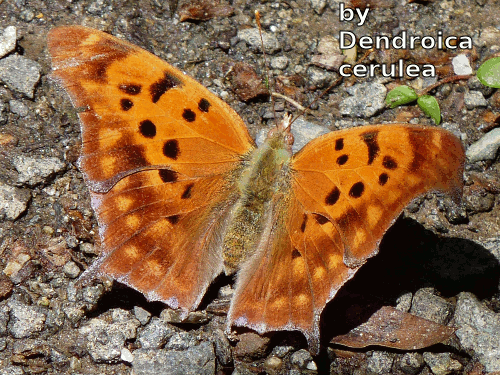
You may be wondering why these butterflies are named after punctuation. It turns out that there are markings on the underside of the hindwings that do kind of look like punctuation. The Question Mark butterfly has a mark that looks like a question mark turned on its side, while the Eastern Comma has a sideways comma.
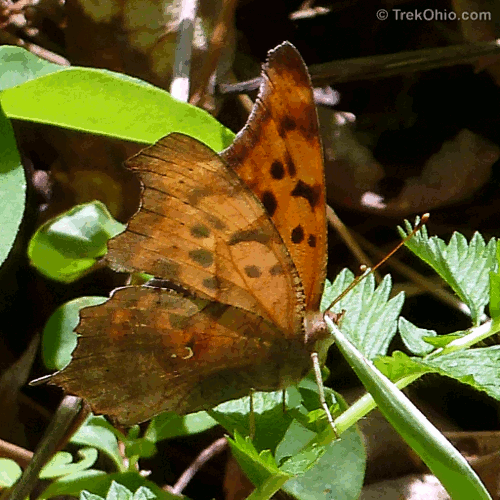
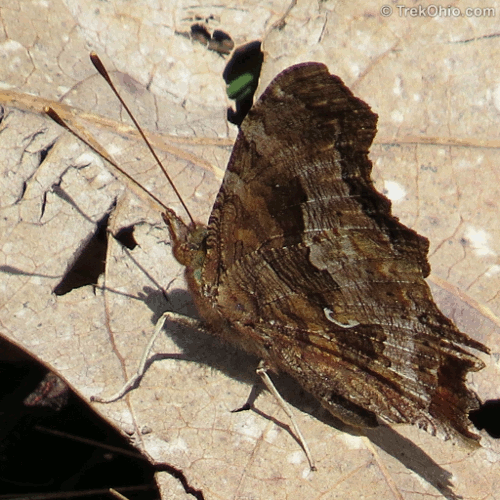
Beyond the punctuation marks, the underside of both butterflies has a dark, mottled appearance. When the butterfly is at rest with its wings up, its wings look a lot like leaf litter or bark. You might have also noticed in the photo above that it looks like the butterfly has two legs on each side of its body. By a stroke of luck, I believe that I have photographed one of the tiny, front legs after which the whole family is named.
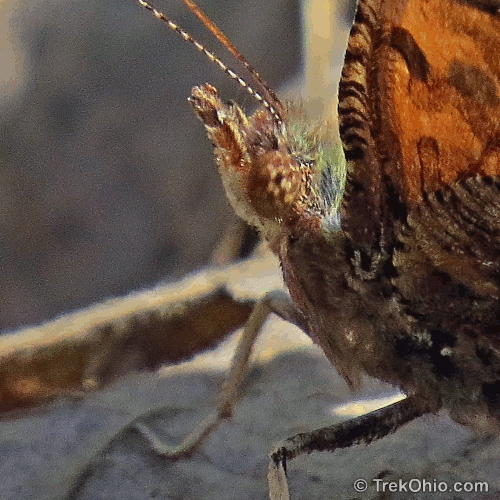
During the summer there is an “umbrosa” form of both butterflies in which the hindwing takes on a dark color like the one below.
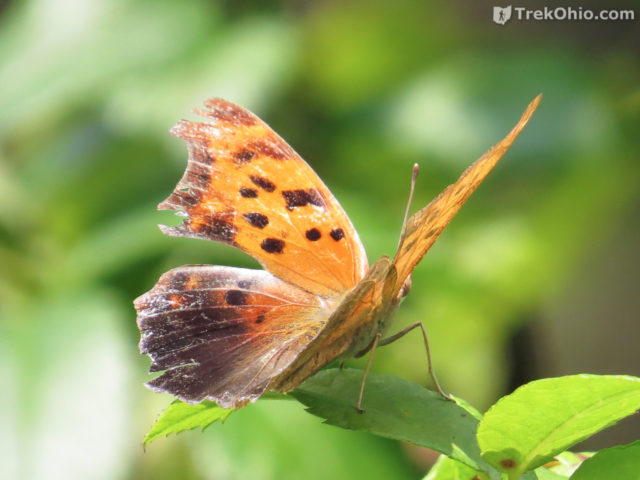
The reason that I’m seeing these butterflies already is that like the Mourning Cloak butterfly, both species hibernate as adult butterflies over the winter by hiding in nooks and crannies. This makes both species long-lived for a butterfly; they top off at about eight months. The host plants for the larva include elms, hackberry and nettles. The Eastern Comma also has a fondness for hops. Adults of both species get nourishment from mud puddles and animal scat. The Question Mark, like the Mourning Cloak, also likes rotten fruit and tree sap. Once in a while either of these adults may eat a little flower nectar.
Additional information
- TrekOhio: The Mourning Cloak Butterfly
- TrekOhio: Male and female Eastern Tiger Swallowtail Butterflies and black butterflies of all sorts
- Wikipedia: Polygonia interrogationis; the Question Mark Butterfly
- Wikipedia: Polygonia comma; the Eastern Comma Butterfly
- Common Butterflies and Skippers of Ohio: Field Guide; this is an e-book in PDF format that’s free to download; note that the file is over 82 MB (published by the Ohio Department of Natural Resources)
- The Ohio Lepidopterists
- The Butterfly Conservation Initiative
More on Butterflies and Moths
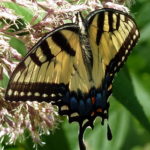
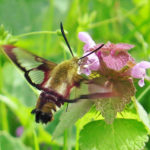
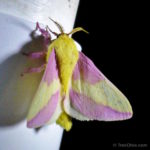
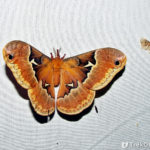
Thank you for posting this. Now I can identify and distinguish between these two types of butterflies. A lot of people online have misidentified them. Now I know what is accurate. 🙂
Kate, glad this post was helpful!
This is such a great post. Such confusing critters!
Thank you, Jennifer! 🙂
Thank you so much for this post! I took a picture of a butterfly today and was having trouble distinguishing it between these two. Your post really helped and the butterfly was an eastern comma.
Sarah, I’m glad to hear that my post was useful. 🙂
What a beautifully detailed post… I would have NEVER known, otherwise! Very interesting.
Thank You teaching us Natures wonders and beauties. This butterfly is not seen in Finland (by me).
good lesson and like the title.